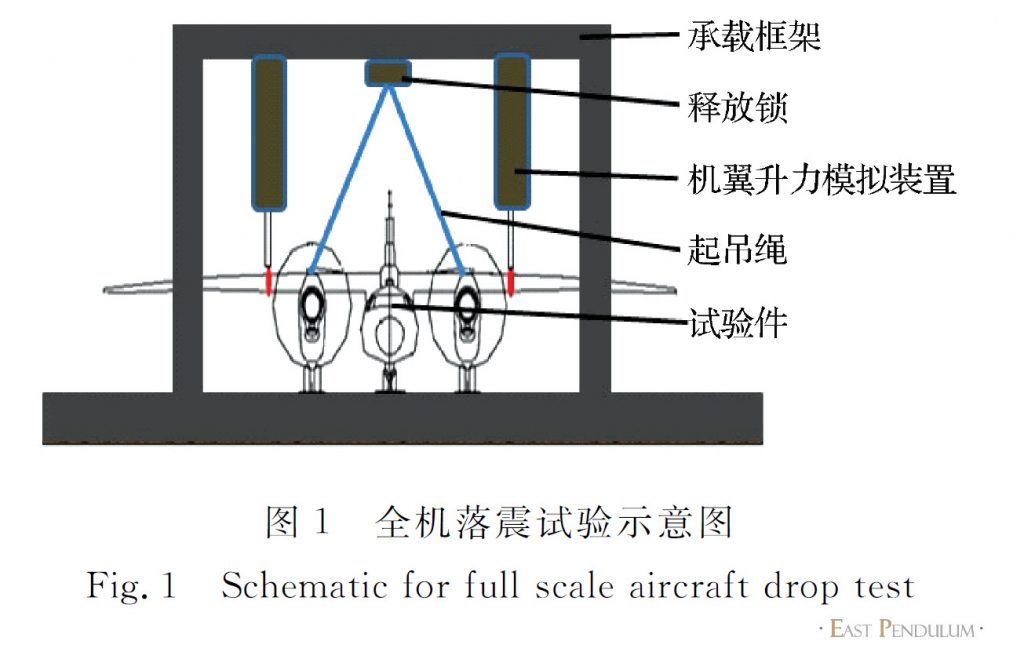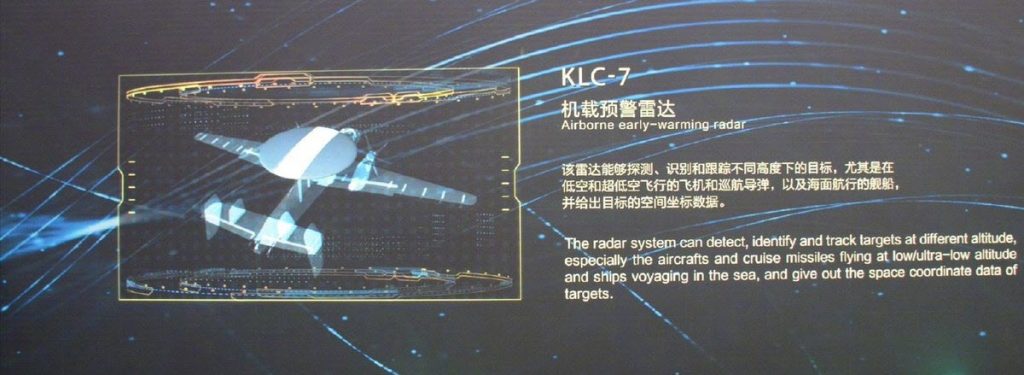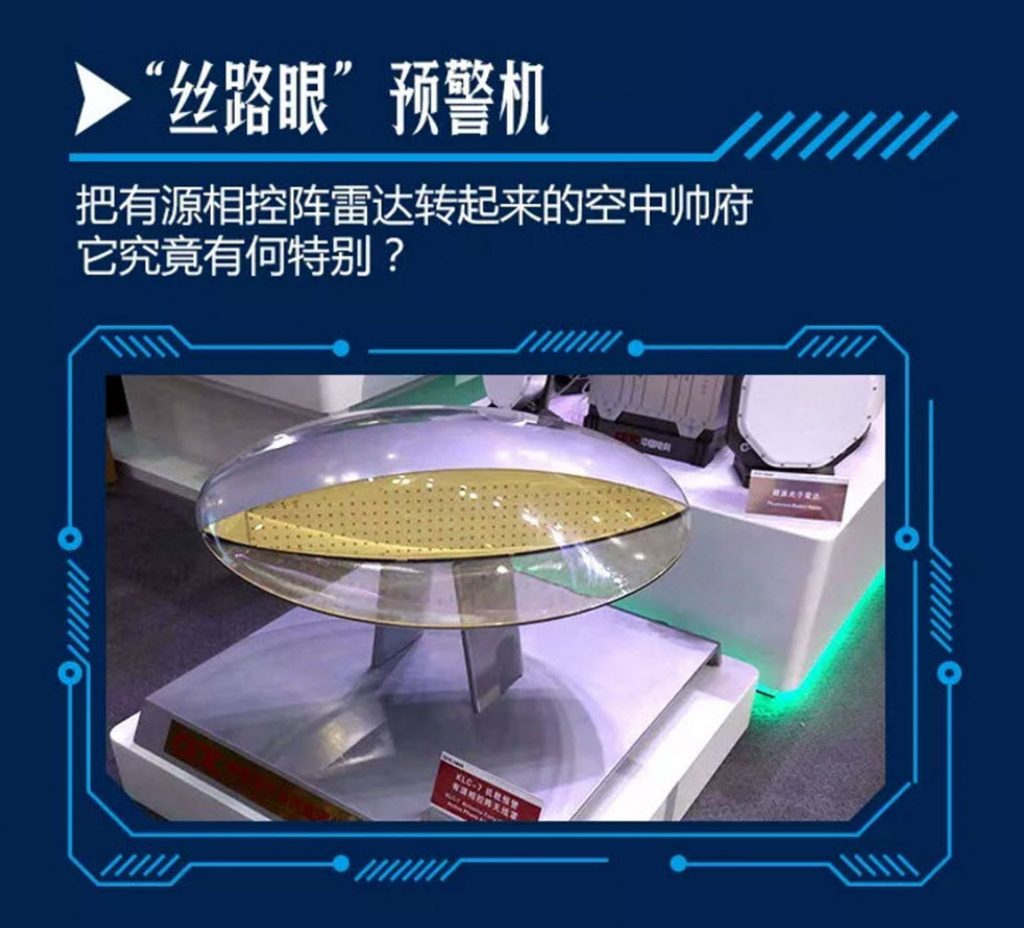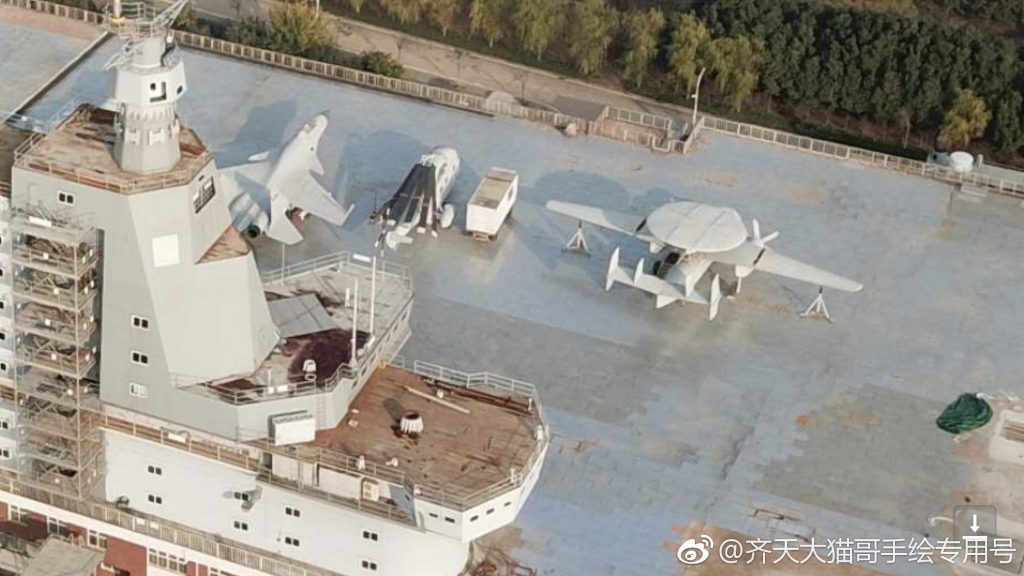You are using an out of date browser. It may not display this or other websites correctly.
You should upgrade or use an alternative browser.
You should upgrade or use an alternative browser.
KJ-600 carrierborne AEWC thread
- Thread starter Blitzo
- Start date
Hendrik_2000
Lieutenant General
Fits nicely to the topic ... roll out seems to be imminent !
Yes here is the translation
Impending roll-out of the first Chinese embedded AWACS
BY
While the big blocks of the 3rd Chinese aircraft carrier come out one after the other at the Shanghai shipyard Jiangnan Changxing, for a dry docking probably in the course of 2019 according to our estimate, another major amplifier component of the Chinese naval air force - AWACS embarked, able to take off from the flight deck using a catapult to ensure the surveillance of the sky as to the sea around the group - should also leave the assembly line and realize its first flight very soon.
If this embedded AWACS project remains sensitive and has never appeared in any of the public documents, at least not directly named, we know that Chinese institutions have not stopped working on the various technical subjects since the early 2000s. . After the first concrete signs of the progress of the project in 2016 (see our " " and " "), we have learned recently that the 603 Xi Institute In December 2018, it led the first real-scale drop test in China for an "onboard device".
The text published on April 2 on the account of this AVIC consulting firm Weixin, specializing in the design of transport aircraft and bombers, obviously did not mention that this is a test for the AWACS embedded. It was even re-edited the day after so that the only word "embedded device" (舰载 机) initially appeared at the end of the article is deleted.
But thanks to this text it is now known that these fall tests should be carried out before the "detailed design end" (详细 设计 发 图) milestone of the aircraft, and therefore before the availability of industrial plans, to serve as the one of the validation points on the design of the payloads, which would include the landing gear and the main radar system.
-

The end of the article published on the site of NRIET, before its re-edition (Image: NRIET) -

From a real scale fall test study (Image: NWPU, AVIC)
Of course this is a big first for China, an AWACS embedded, so the time needed between the start of the industrial phase and the first flight of the prototype could be naturally more consistent. It is then reasonable to think that the roll-out of the first Chinese AWACS could take place by the end of 2019 or 2020.
As for the type of radar chosen, rumors speak of an active antenna radar (AESA) mounted on a rotating disk, to favor the "width" of the radar so the number of modules installed, the power and the range, to the detriment of the rate if it had been a three-sided fixed configuration as for the KJ-2000 and the KJ-500. A quick calculation shows that in "back-to-back" configuration, the "width" of each radar face is about 15% higher than in the configuration of three fixed faces, but all of this remains to be confirmed.
-

The KLC-7 radar in a video presentation at the Zhuhai Show 2018 -

The AWACS KLC-7 radar model (Image: NRIET)
According to the description, this Chinese AWACS carries with it the KLC-7 radar, also called " Silk Road Eye " (丝路 眼), which is now offered for export. The latter is able to detect and track air targets, such as aircraft and flying missiles flying at very low altitude, as well as naval targets, and provide their coordinates in 3 dimensions.
If we ignore its connection with the Chinese AWACS project that is under development, the Chinese radar operator says that China is the only country in the world to offer this type of radar on the international market today, while the AN / APY-9 developed by Lockheed Martin for the E-2D Advanced Hawkeye program is likely to be in the same radar category even if the version is only for the US Army at the moment.

On the flight deck of the aircraft carrier in Wuhan (Image: 齐天 大 猫 哥 手绘 手绘 手绘 用 用 用 用 用 号)
Finally, it should be noted that an embedded AWACS model is mounted "on board" the aircraft carrier, in fact an electromagnetic compatibility study platform of the 701 Institute (CSIC) in Wuhan.
This building is in transformation since 2016 to take the shape of the island of the 3rd Chinese aircraft carrier, a CATOBAR. The photos as of January 2017 show that the model is on the "flight deck" alongside a Z-8 helicopter and a J-15 onboard fighter, both in the form of a marquette also.
asif iqbal
Lieutenant General
Building a Carrier based AWACS is not a easy task
I mean they could build one but they could go into serious problems
A carrier AWACS is more complicated than a JF17 fighter
Did the Soviet Union ever fly their carrier AWACS? If no then this means China is only the second nation in the world to do so
Launching a 40-50 ton plane will balancing a radar on top at sea from a carrier is nothing short of a miracle
They could build one and launch it but can they fully commission a set of 4 x KJ-600 for 003 in 5 years?
The technical difficulties are not to be understated
The programme can be delayed and delayed like Type 726 LCAC
Anyway let’s see how it plans out
I mean they could build one but they could go into serious problems
A carrier AWACS is more complicated than a JF17 fighter
Did the Soviet Union ever fly their carrier AWACS? If no then this means China is only the second nation in the world to do so
Launching a 40-50 ton plane will balancing a radar on top at sea from a carrier is nothing short of a miracle
They could build one and launch it but can they fully commission a set of 4 x KJ-600 for 003 in 5 years?
The technical difficulties are not to be understated
The programme can be delayed and delayed like Type 726 LCAC
Anyway let’s see how it plans out
Neutral Zone
Junior Member
Absolutely, I don’t think the Hawkeye gets the recognition it deserves, in my opinion it’s one of the greatest military aircraft designs ever. AEW requires a lot of computer power which in turn often needs an airliner sized airframe to carry it. To get all that gear into an airframe light and compact enough to operate off a carrier, is remarkable. I don’t think the Soviets ever got theirs past the mock up stage, China will no doubt be the second country to develop that capability, there’ll be some setbacks along the way but they’re prepared to throw enough money at it.
Absolutely, I don’t think the Hawkeye gets the recognition it deserves, in my opinion it’s one of the greatest military aircraft designs ever.
True.
A carrier air wing needs an AEW aircraft to achieve full functionality. Without proper early warning and guidance a modern air wing loses a lot of strike ablity.
And there is a difference between AWACS and AEW;
Airborne Early Warning [AEW] is the detection of enemy air or surface units by radar or other equipment carried in an airborne vehicle, and the transmitting of a warning to friendly units. Airborne early warning and control [AEW & C] is air surveillance and control provided by airborne early warning aircraft which are equipped with search and height-finding radar and communications equipment for controlling weapon systems.
The E-3 airborne warning and control system (AWACS) is built by Boeing Defense & Space Group. The role of the E-3 is to carry out airborne surveillance, and command, control and communications (C3) functions for both tactical and air defence forces.
In a tactical role, the E-3 can detect and track hostile aircraft operating at low altitudes over any terrain, and can identify and control friendly aircraft in the same airspace. In the strategic defence role, the E-3 provides the means to detect, identify, track and intercept airborne threats.
TerraN_EmpirE
Tyrant King
Add the words fixed wing.Building a Carrier based AWACS is not a easy task
Technically third.Did the Soviet Union ever fly their carrier AWACS? If no then this means China is only the second nation in the world to do so
The First was of course the U.S. at the end of world war 2 with the Skyraider the British bought some of those and later took the radar off of them and mounted it in their own aircraft the Fairly Gannet AEW in 58 59 becoming the second fixed wing carrier AWACS nation. At that same time the US introduced the Grumman E1 Tracer the Trifecta of the C1 Trader, S1 Tracker. both left service by 78. The Tracer would be replaced by the Hawkeye. The Fairly Gannet wouldn't have a replacement instead the British moved to rotary wing.
The Russians never built the Yak44 beyond mockup. They built rotary wing AEWs.
Add the words fixed wing.
Technically third.
The First was of course the U.S. at the end of world war 2 with the Skyraider the British bought some of those and later took the radar off of them and mounted it in their own aircraft the Fairly Gannet AEW in 58 59 becoming the second fixed wing carrier AWACS nation. At that same time the US introduced the Grumman E1 Tracer the Trifecta of the C1 Trader, S1 Tracker. both left service by 78. The Tracer would be replaced by the Hawkeye. The Fairly Gannet wouldn't have a replacement instead the British moved to rotary wing.
The Russians never built the Yak44 beyond mockup. They built rotary wing AEWs.
It's Fairey Gannet, not Fairly
Russians did fly An-71 which was considered for some time to be carried also by CVN Ulyanovsk, but the requirement to take off from CV on single engine led to dropping An-71 and design of Yak-44. An-71 was also too tall for 1143.. class hangar, so a redesign would be required anyway.
TerraN_EmpirE
Tyrant King
I blame predictive auto spell check. It has a habit of changing things on its own.
AN71 was suspected in the West for the job but lacked naval features like folding wings.
It was a Russian Airforce project. Not Naval air force.
As such it never operated off a carrier or as a carrier capable platform. So it doesn't count.
If this progresses to actually fly off a carrier then the PRC gets number 3 on that short list.
AN71 was suspected in the West for the job but lacked naval features like folding wings.
It was a Russian Airforce project. Not Naval air force.
As such it never operated off a carrier or as a carrier capable platform. So it doesn't count.
If this progresses to actually fly off a carrier then the PRC gets number 3 on that short list.
Yes, it was Airforce project which was considered by Navy and rejected due to major redesign and re-engining required.I blame predictive auto spell check. It has a habit of changing things on its own.
AN71 was suspected in the West for the job but lacked naval features like folding wings.
It was a Russian Airforce project. Not Naval air force.
As such it never operated off a carrier or as a carrier capable platform. So it doesn't count.
If this progresses to actually fly off a carrier then the PRC gets number 3 on that short list.
TerraN_EmpirE
Tyrant King
Right.
It was theoretically a potential one. Howrver AN71 never operated off a carrier and no more than 3 were ever built. The level of modifications would have made it a totally new aircraft the AN75.
As such it doesn't count to a fixed wing Carrier AWACS.
The Kuznetsov used Ka31 Helix for the job.
It was theoretically a potential one. Howrver AN71 never operated off a carrier and no more than 3 were ever built. The level of modifications would have made it a totally new aircraft the AN75.
As such it doesn't count to a fixed wing Carrier AWACS.
The Kuznetsov used Ka31 Helix for the job.
